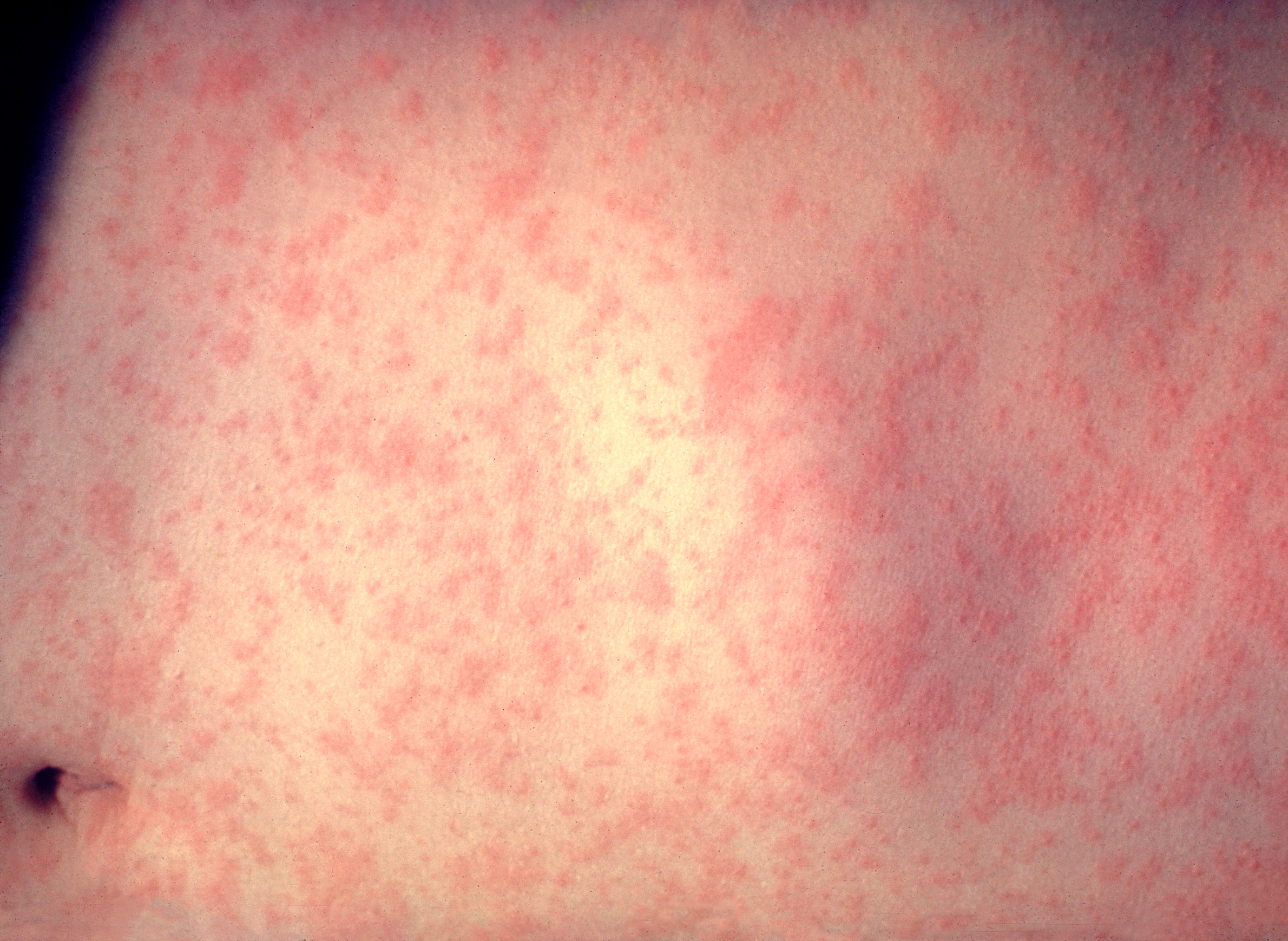Wisconsin sees first Measles cases, with 9 confirmed in Oconto County – WPR

Public Health Report: Measles Outbreak in Oconto County and Implications for Sustainable Development Goals
1.0 Executive Summary
This report details a confirmed measles outbreak in Oconto County, Wisconsin, and analyzes the situation through the lens of the United Nations Sustainable Development Goals (SDGs). The outbreak, comprising nine cases, highlights critical challenges and progress related to SDG 3 (Good Health and Well-being), SDG 10 (Reduced Inequalities), and SDG 17 (Partnerships for the Goals). The state’s low vaccination rates present a significant barrier to achieving public health targets, underscoring the need for reinforced strategies in health education and vaccine accessibility.
2.0 Outbreak Details and Immediate Response
State and county public health officials have confirmed the first measles cases in Wisconsin for the year, originating from a common source during out-of-state travel. The response demonstrates a crucial partnership for public health, aligning with SDG 17.
2.1 Case Confirmation
- Total Confirmed Cases: 9
- Method of Confirmation:
- One case confirmed via testing at the state hygiene laboratory.
- Eight cases confirmed based on known exposure and clinical symptoms.
2.2 Public Health Action and Risk Assessment
- Inter-Agency Collaboration (SDG 17): The Wisconsin Department of Health Services (DHS) and Oconto County health officials are collaborating to identify and notify potentially exposed individuals.
- Community Risk Level: The risk to the general community is currently assessed as low, with no public points of exposure identified.
3.0 Measles and its Challenge to SDG 3: Good Health and Well-being
The highly contagious nature of the measles virus directly threatens the achievement of SDG 3, particularly Target 3.3, which aims to end the epidemics of communicable diseases by 2030. The outbreak serves as a critical reminder of the fragility of public health gains.
3.1 Virus Characteristics
- Transmission: Spreads through the air and can remain infectious for up to two hours after an infected person coughs or sneezes.
- Infectivity: Up to 90% of non-immune individuals exposed to the virus will become infected.
- Symptoms: Typically appear 10 to 21 days post-exposure and include:
- High fever and tiredness
- Runny nose and cough
- Red, watery eyes
- A distinctive red rash with raised bumps
3.2 National Impact
The severity of measles is evident in recent national data from the U.S. Centers for Disease Control and Prevention, which reports 169 hospitalizations and three deaths this year, further emphasizing the importance of preventative measures to secure community health.
4.0 Vaccination: A Cornerstone for Universal Health Coverage (SDG 3.8)
Access to safe and effective vaccines is a fundamental component of universal health coverage (SDG 3.8). The measles, mumps, and rubella (MMR) vaccine is the primary tool for preventing outbreaks and protecting community health.
4.1 Vaccine Efficacy and Recommendations
- Effectiveness: Two doses of the MMR vaccine are 97% effective at preventing measles.
- DHS Recommendations:
- Children should receive two doses.
- Adults without evidence of immunity should receive at least one dose.
- Individuals born before 1957 are generally considered immune.
5.0 Vaccination Gaps: A Threat to SDG 10 (Reduced Inequalities)
Disparities in vaccination coverage across Wisconsin represent a significant public health vulnerability and an issue of inequality, undermining SDG 10. Low immunization rates in certain areas leave entire communities susceptible to preventable diseases.
5.1 Wisconsin’s Vaccination Statistics
- Statewide Rate (2-year-olds): 81% as of 2023, a decline from 88% in 2013.
- County-Level Disparities: Some Wisconsin counties report vaccination rates as low as 50%.
- Herd Immunity Threshold: Public health experts state that a vaccination rate of 95% to 98% is necessary to protect the population from a measles outbreak, a target Wisconsin is currently failing to meet in many areas.
This data indicates a critical gap in public health equity and highlights the need for targeted interventions to ensure all communities receive the protection afforded by vaccination, thereby promoting both SDG 3 and SDG 10.
1. Which SDGs are addressed or connected to the issues highlighted in the article?
-
SDG 3: Good Health and Well-being
This is the primary SDG connected to the article. The text focuses entirely on a public health issue: a measles outbreak, the importance of vaccination, the response from health officials, and the health risks associated with the disease. The goal aims to ensure healthy lives and promote well-being for all at all ages, which directly involves preventing and treating communicable diseases like measles.
2. What specific targets under those SDGs can be identified based on the article’s content?
-
Target 3.3: End the epidemics of communicable diseases
The article directly addresses this target by reporting on a measles outbreak. It states, “Nine cases of measles have been confirmed in Oconto County,” and describes measles as a “highly contagious” communicable disease. The efforts of “local public health officials… to identify and notify people who may have been exposed” are actions aimed at containing and ending this specific epidemic, which is the core objective of Target 3.3.
-
Target 3.8: Achieve universal health coverage, including access to essential medicines and vaccines
This target is relevant because the article extensively discusses the measles vaccine as a critical preventative measure. It highlights the importance of vaccination coverage, stating that “Measles can be prevented by the measles, mumps and rubella, or MMR, vaccine.” The discussion around Wisconsin’s low vaccination rates and the need for high coverage to prevent outbreaks points to the challenges and importance of ensuring universal access to and uptake of essential vaccines.
-
Target 3.b: Support the research and development of vaccines and provide access to affordable essential medicines and vaccines
While the article does not cover the R&D aspect, it is fundamentally about providing access to an existing vaccine. The article’s focus on vaccination rates (“81 percent of two-year-olds had the vaccine”) and the consequences of low uptake directly relates to the goal of providing access to vaccines for all. The statement that “we need something like 95 to 98 percent of all people to be vaccinated in order to protect us from an outbreak” underscores the public health goal of widespread vaccine access and use, a key component of this target.
3. Are there any indicators mentioned or implied in the article that can be used to measure progress towards the identified targets?
-
Indicator for Target 3.3: Incidence of communicable diseases
The article provides specific data points that measure the incidence of measles. This is a direct indicator of whether the epidemic is being controlled.
- Evidence: The article explicitly states, “Nine cases of measles have been confirmed in Oconto County” and that these are “the first confirmed cases of the virus in Wisconsin this year.” It also notes that nationally, “cases… reached their highest number in 33 years.”
-
Indicator for Target 3.3: Morbidity and mortality associated with communicable diseases
The article provides national statistics on the severity of the disease, which can be used to track the health impact of the outbreak.
- Evidence: “So far this year, 169 people have been hospitalized and three people have died from the disease, according to the U.S. Centers for Disease Control and Prevention.”
-
Indicator for Target 3.8 and 3.b: Proportion of the target population covered by immunizations (specifically the MMR vaccine)
This is the most clearly defined indicator in the article, aligning with the official SDG indicator 3.b.1. The text provides precise figures on vaccination coverage.
- Evidence: “As of 2023, 81 percent of two-year-olds had the vaccine, down from 88 percent in 2013.” The article also notes regional disparities: “Some Wisconsin counties had vaccination rates closer to 50 percent.” This data is used to measure progress (or lack thereof) towards achieving herd immunity, which requires “95 to 98 percent of all people to be vaccinated.”
4. Table of SDGs, Targets, and Indicators
| SDGs | Targets | Indicators |
|---|---|---|
| SDG 3: Good Health and Well-being | Target 3.3: By 2030, end the epidemics of AIDS, tuberculosis, malaria and neglected tropical diseases and combat hepatitis, water-borne diseases and other communicable diseases. |
|
| SDG 3: Good Health and Well-being | Target 3.8: Achieve universal health coverage, including… access to… safe, effective, quality and affordable essential medicines and vaccines for all.
Target 3.b: …provide access to affordable essential medicines and vaccines… |
|
Source: wpr.org

What is Your Reaction?
 Like
0
Like
0
 Dislike
0
Dislike
0
 Love
0
Love
0
 Funny
0
Funny
0
 Angry
0
Angry
0
 Sad
0
Sad
0
 Wow
0
Wow
0



























;Resize=805#)


















































